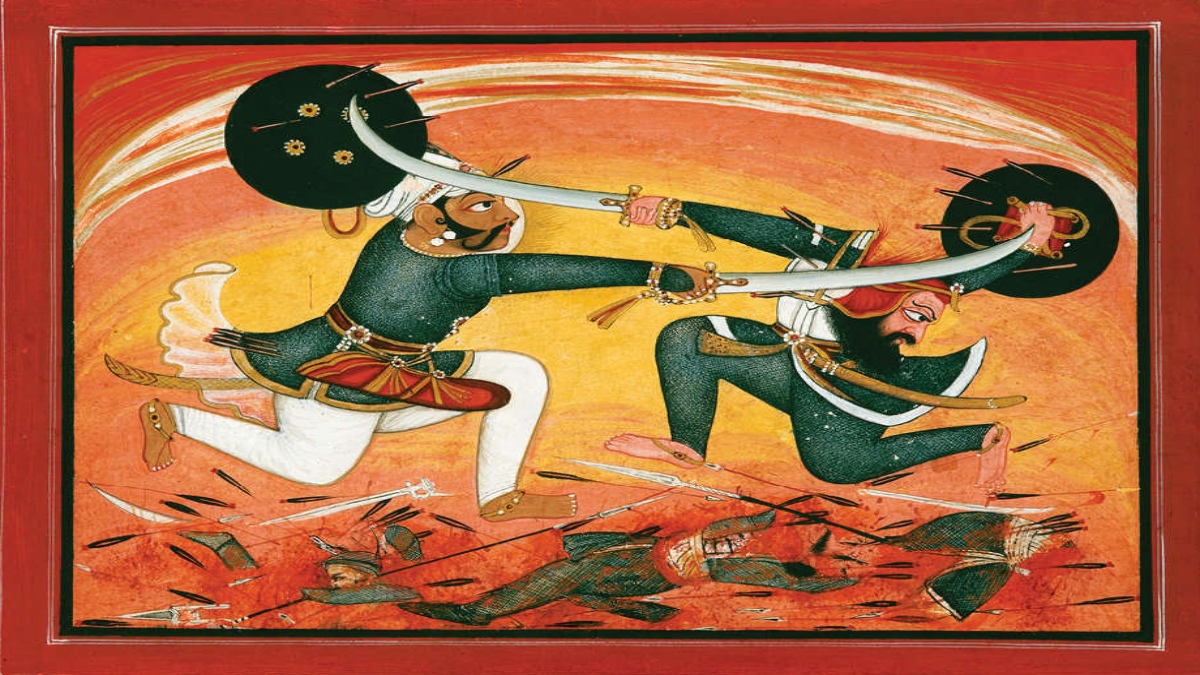





For a design addict like me, perennially engrossed in history and heritage, the Mughal era of resplendence holds a special place in the heart. Possibly the most enriching moments in Indian history, when it comes to the finer nuances of life, the Mughal era redefined our culture in more ways than one. These invaders like their many predecessors fell in love with the presiding heritage of India: its palaces, temples, craft and textiles. Borrowing from their inbuilt genius, an eye for detail, and the subliminal influence of Ottoman and Safavid cultures they then created a new design vocabulary with a strong language that blended into existing cultures. At the same time creating a space for a new richness not experienced in the sub-continent earlier.
Islamic arches, calligraphic lettering, rare influences of lapidary art, the rich use of Petra Dura, and the mystical textile culture of Mughal Burhanpur personified the Mughal era. A historic moment that comes to life in the coffee table book ‘Reflections on Mughal Art and Culture’ published by Niyogi Books and edited by Roda Ahluwalia. Through a series of in-depth writing and well-chronicled images, the book captures not just the art and architecture of the Mughal era but also its underlying socio-economic cultures. An independent scholar of South Asian Art, with an interest in painting and the book arts, religio-philosophical thought, and the material culture of South Asia, Roda invites participation from many experts who essay their views on the various aspects of Islamic culture. Having worked with the Rajput painting and manuscript collections of the British Museum and the British Library, she pens a very engaging chapter on works of seventeen artists listed by Abu Fazal in ‘A’in-I’Akbari’.
Themes as diverse as portraits of royal women, sub-imperial patronage of temples, word-image relationship, the lapidary arts, and the Imperial Library of the Mughals are consideration of Mughal garden typologies, murals painted on architectural surfaces, the textile culture of the city of Burhanpur, changes in the visual language and content of the painting, and imperial objects d’art have been discussed, challenged, and analysed. The final three articles are groundbreaking comparisons across Ottoman, Safavid, and Mughal spheres. This beautifully illustrated book is sure to appeal to connoisseurs, collectors, and scholars alike.
The articles in the book explore varied subjects under the Mughal umbrella, challenge long-held ideas and draw comparisons between the artistic expressions and material culture of the powerful Islamic cultures of the Safavids in Iran, the European-based Ottomans, and the Mughals in the Indian subcontinent.
Many, especially in the current political landscape, question the secular intent of the Mughals but in this book, Roda throws light on the multicultural history and the easy flow of ideas that prevailed during the era of Emperors Akbar and Jehangir. There are many Hindu artists in the famed ‘A’in-I’Akbari’ including Kesu, Jagan, and Haribans. The sub imperial patronage of temples that were built during this regime under the direct patronage of their Rajput rulers also shows the prevalence of Akbar’s policy of sulk-i-kul (universal conciliation). The Adinath temple at Ranakpur, temples in Chittor, and temples built by Raja Man Singh (Govinda Deva Temple in Vrindavan), and Jagat Shiromani in Amer, show the distinct prevalence of the geometric influence personified in the Mughal era.
Busting the myths of the absence of figurative art in Islam, the book dedicates a special chapter on feminism and the strong portrayal of women in the Mughal courts. Specially Mahim Anaga, the foster mother of Akbar and his advisor, and Hamida Banu, Akbar’s mother and chief wife of Humayun. The powerful image of Mahim Anaga, seated in a bustling court next to Akbar, portrays the sheer power of a mother who taught the art of governance to this legendary ruler.
From visual imagery to verses of romance, it delves into the Persianate imagery of the Indian woman. The poets captured the beauty of the mystical apsaras and Persian women. Of interesting read is also the architectural heritage left behind by the Mughal emperors, especially the Mughal garden typologies: The chaarbaghs that gracefully encase their palaces, the generous use of lattice motifs on their windows, and the Petra Dura engravings that have been most immortalised in the Taj Mahal. This book feels like a special treat both for the eyes and the mind.

